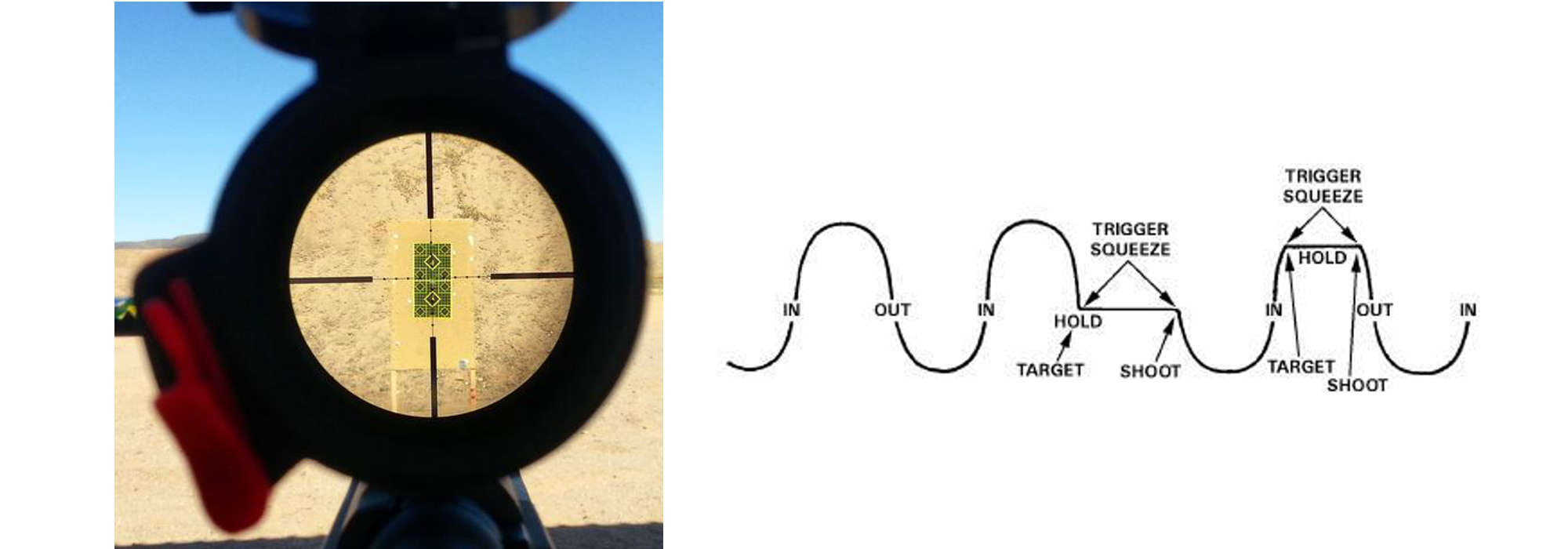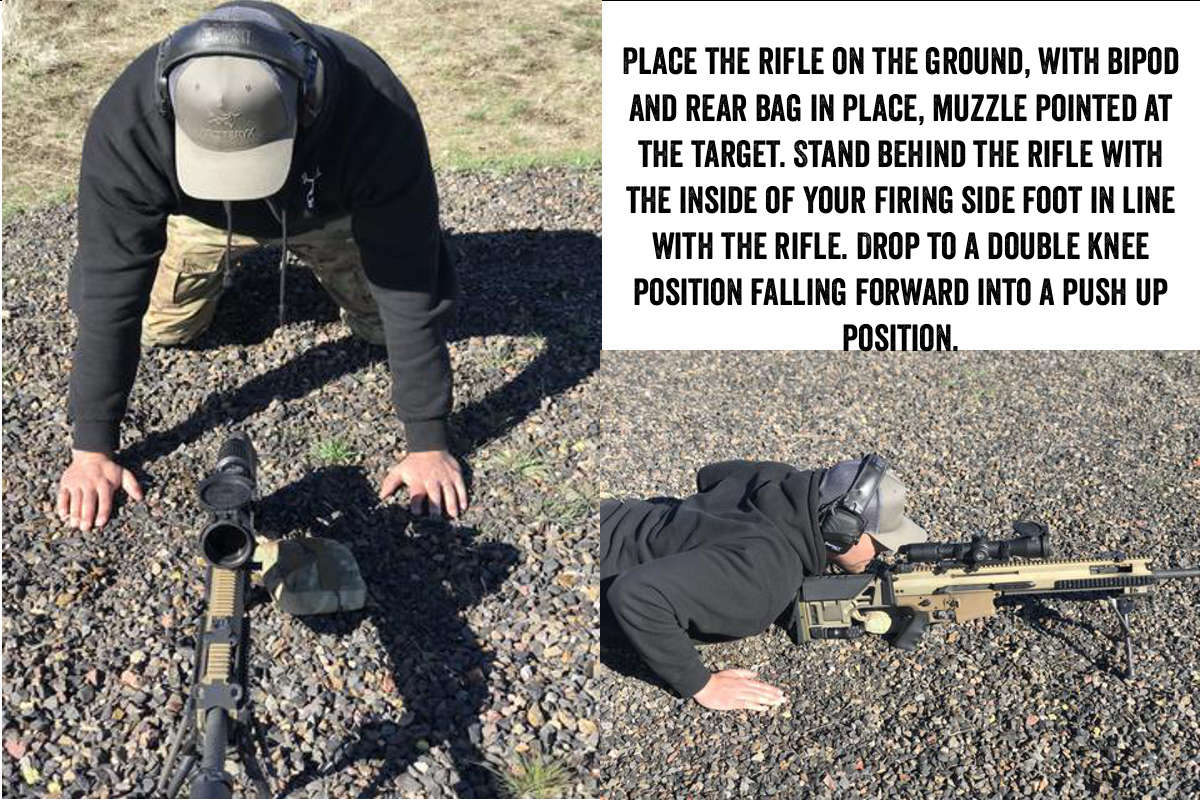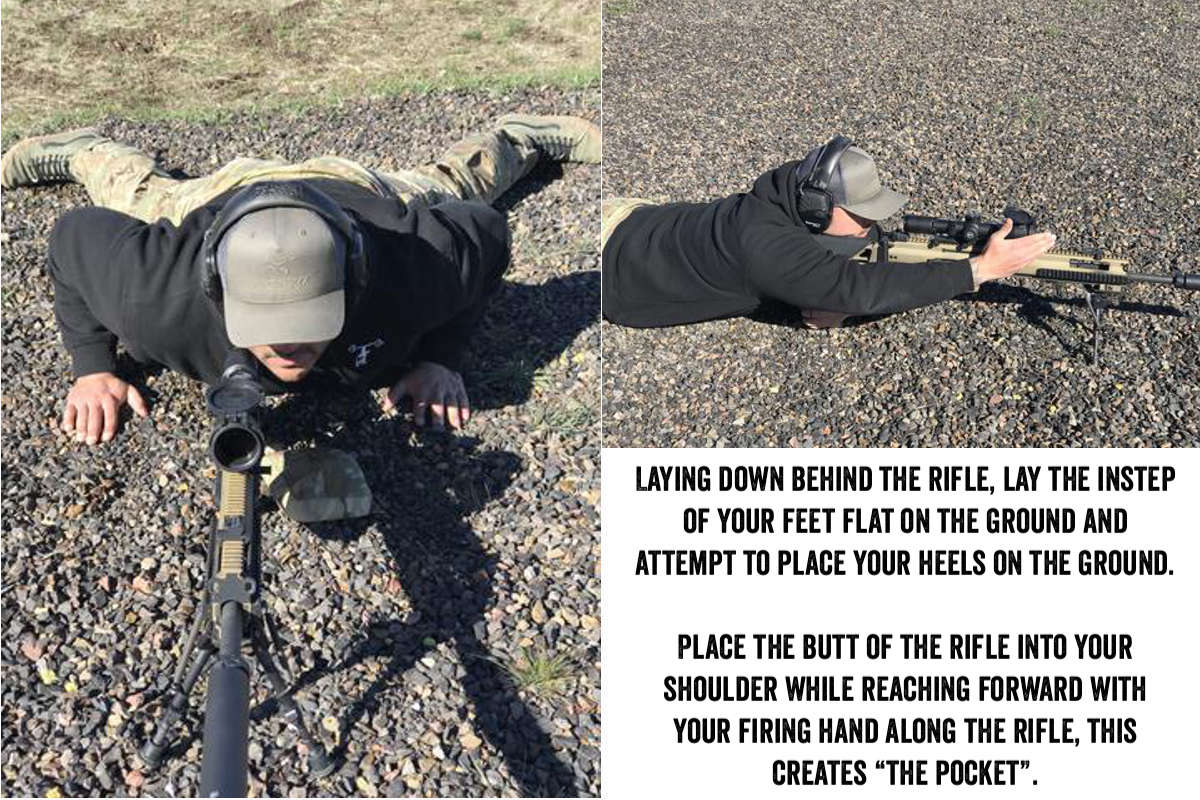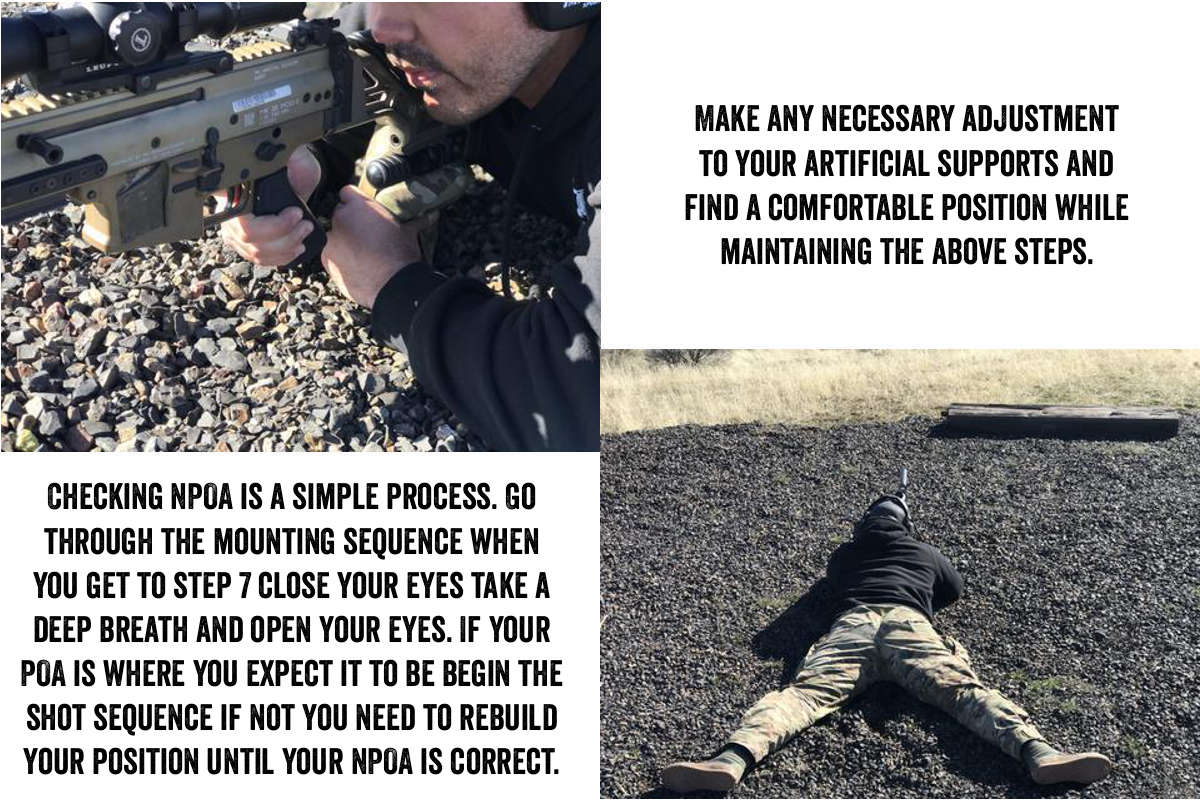Long Range 101: Basic Fundamentals of Marksmanship With a Scoped Rifle
Expanding on the previous article Intro to Long Range Marksmanship, we will be discussing some basic skills needed to get you training and on target. Please feel free to revisit the last article for common terms we will be using going forward.
Shot Sequence
Pre Shot:
- Stable, repeatable position
- Natural Point Of Aim
- Sight alignment/sight picture
- Hold
During Shot:
- Aim
- Breath control
- Trigger control
Post Shot:
- Follow through
- Recoil mitigation
- Sight picture
- Process/Analyze
Above I have broken down a basic shot sequence. These are the basic elements to any engagement, but for this installment we will specifically be discussing the prone position. The prone position is the most stable position outside of a bench, and will be the position you will utilize for all zeroing and data collection. Consistency equals accuracy and precision, and this position allows for the most consistency behind your rifle. This position is normally used only for zeroing and gathering data. Very seldom will you find yourself with the opportunity to take a shot from the prone in the field, although some competitions shoot from it exclusively. Learning how to effectively build and utilize alternative firing positions is crucial to practical success, which we will cover in later articles.
Fundamental Tasks
Over time, the process above will become one of automation because they are interdependent of one another. As you begin, however, it’s best to sustain and practice a mental checklist to ensure you don’t start to slip on any of the fundamental aspects. Throughout the process of taking a shot, you must consistently sustain these four fundamental tasks to accurately and efficiently engage targets with a firearm.
1. Stability
This the function of how you stabilize the weapon system to the target. A consistent base of stability needs to be maintained throughout the entire shot process to ensure the most accurate engagement. There are natural ways and artificial ways to achieve stability and 99% of the time it will be a combination of both
a. Natural support comes from your body. Muscles and bones. Where possible, bones are preferable to muscles, as muscles fatigue.
b. Artificial support comes from object that are not your body. The most common ways to achieve this is through the use of a bipod and a rear bag also known as a sand sock. Other artificial support may come from slings, tripods, backpacks/rucksacks, barricades, even rocks and tree limbs.
2. Aim:
a. Sight alignment with a scoped rifle is the relationship between your eye and the reticle of the optic. Achieving a full field of view free of vignetting, also known as scope shadow. You achieve this by setting the proper eye relief when mounting the optic, keeping your eye aligned properly, and setting the parallax on your optic properly.
b. Sight Picture(s). This the actual act of aiming the reticle at the desired point of impact. There are two sight pictures in the firing sequence. Pre-fire and post-fire, Pre fire is everything already discussed while post fire is the sight picture used as the reference for your post shot evaluation.

3. Trigger and Breath Control
These are your actions before during and post shot. I will categorize these into two tasks, Trigger control and breath control. If you cannot control these effectively under stress it might be time to get on the Stamina Team.
a. Trigger control is the continuous control of what and when to engage a target. It is also follow through after the shot. Not maintaining proper trigger control will cause a horizontal dispersion in your grouping.
i. Finger placement. Your finger should lay flat and natural on the trigger. Contrary to old logic there is no designated spot to index, Finger length varies person to person. Ensure your thumb and pad of hand are resting naturally on the pistol grip. It doesn’t really matter where as long as they are not a counteracting pressure.
ii. Trigger press should be executed in a consistent, controlled, “straight back” manner. The old wisdom that the shot should “surprise you” is a training technique intended to encourage a slow, controlled press. The reality is that the break of the trigger should never surprise you. YOU CHOOSE when the shot is taken and you should do so in a controlled, planned manner. Being “surprised” by the shot can lead to a flinch, a negative anticipation that can have detrimental effect on your entire process. Constant dry fire practice will help develop this skill.
iii. Follow through and Reset is achieved by pinning the trigger to the rear after the shot breaks as well and maintaining your body position and sight picture for follow on engagements.
b. Breath control, the ability to breathe calmly and control its cadence is a fundamental task of precision shooting. Failing to do so can be a cause of vertical dispersion in your point of impact and make it harder to achieve stability. Breaking a shot during your natural respiratory pause is the best way to remain consistent and remove 99% of movement in your system.
i. Achieving your natural respiratory pause is a very easy process. It includes breathing in and breathing out. Before your breathing cycle starts over there is a natural pause, IN x OUT x PAUSE x IN. To be clear, the pause is not about holding your breath. Actively holding your breath will inadvertently increase your heart rate and induce stress, something we are trying to avoid for the sake of stability and fine motor control, especially at a critical moment. The NRP is part of a natural, easy, steady breathing cadence intended not only to provide the best opportunity for you to break the shot, but also to help you remain calm, clear headed, and avoid fatigue for any further engagements. Breaking the shot within your NRP is the best way for the shooter to maintain consistency.
4. Body control
This is the relationship between the shooter and the rifle. You must think of yourself as a system. If you give an input to the rifle, you will get an output. Managing your body’s movement and minimizing it as much as possible during your firing sequence will give you the best chance at accuracy and precision. The best way to do this is to build and maintain a solid, repeatable position. Body control and a stable firing position will also lead toward recoil mitigation. How your body responds under recoil will affect your point of impact. This is also why sloppy trigger control can “throw” a shot and lead to fliers. During that microsecond of the bullet traveling down the barrel, we need to minimize (or at least standardize) how the rifle will respond in order to give us a repeatable point of impact. Any excess movement or pressures on the rifle will reveal themselves while the rifle is “loosed” under recoil.
Mounting The Rifle in the Prone
Now that we have covered the major points in fundamentals, let’s talk about mounting the rifle in the prone position. This is a pretty straightforward task.
Check on Learning
The first big takeaway from this is consistency, whether it’s good or bad. If you are consistently lacking in a particular fundamental, it should be immediately obvious. Once we diagnose those problems, we can build fail safes into our training to fix them. We can shoot a group and then process that information. You have been given some good ideas already on how to diagnose any deficiencies you might be seeing. A lot of this can be executed at the 100 yard line.
The second big takeaway is stability. This is because you need to achieve stability to perform the above actions. If you fail to be stable when building your position it will cause a ripple effect of poor marksmanship. This goes well beyond the prone position. Lack of stability in alternate positions that are inherently more unstable will cause even more drastic problems, so focusing on fundamentals become only more important as you build your skillset. Consistency and Stability are the number 1 and 2 priority tasks for every engagement.
Below I will lay out a consistency check drill that can help reveal some of your flaws. Mastering this drill at the 100 yard line will build confidence and ability for your 1000 yard game. I learned this drill from two of my mentors Michael Baccellieri of the Leupold Optics Academy and Caylen Wojcik of GunWerks. I use this drill when I have lack of range and a lack of time. I believe this drill to be foundational in my training and encourage you to do the same.
Consistency Check Drill
Weapon/Equipment: Assigned weapon or comp gun ( 1 moa or better). 1x Rear bag 1x bipod.
Target: Take a standard piece of paper and 12x1” squares place them evenly apart on the paper.
COF: From the 100 yard line build a prone position and fire 1 round into the first square. Stand up take 5 deep breaths get back down and begin rebuilding your position and fire 1 round into the next square. Stand back up and repeat. If you are building a proper position and achieving NPOA every round from 1-12 should be in the square. If not then you need to analyze your shot strings and figure out what portion of the shot sequence is unsat.
As always, direct your questions to the comments section and the staff here will be happy to weigh in.
Major Clutch and John Warchild have combined forces for all future long range articles. From now on, we'll just be referencing Warchild and Clutch and let them fill in the blanks on their own.
John Warchild is a Senior U.S. Army Sniper and the Marketing Coordinator at Leupold & Stevens, Inc. He lives in the PNW, loves the long range game, and is an adrenaline junkie like the rest off the SOFLETE crew.
Major Clutch is an active duty officer who shoots long range competitively in between deployments, overseas assignments, and helping raise his family of heathens. He is a huge nerd who spends an inordinate amount of time reading and re-loading.
We at SOFLETE couldn't think of better guys to explain the science of marksmanship to our readers.
DIE LIVING









